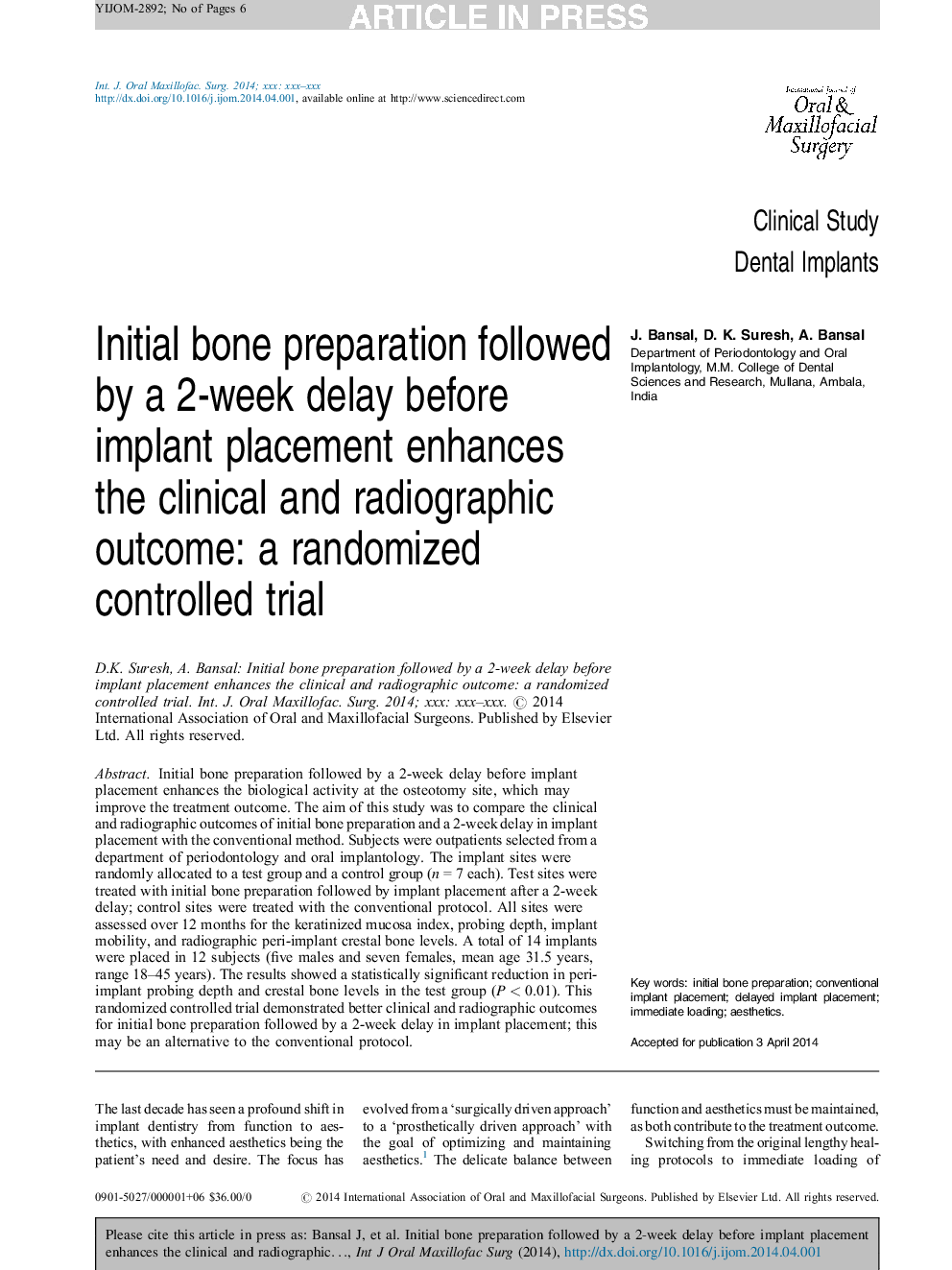| Article ID | Journal | Published Year | Pages | File Type |
|---|---|---|---|---|
| 6052438 | International Journal of Oral and Maxillofacial Surgery | 2014 | 6 Pages |
Abstract
Initial bone preparation followed by a 2-week delay before implant placement enhances the biological activity at the osteotomy site, which may improve the treatment outcome. The aim of this study was to compare the clinical and radiographic outcomes of initial bone preparation and a 2-week delay in implant placement with the conventional method. Subjects were outpatients selected from a department of periodontology and oral implantology. The implant sites were randomly allocated to a test group and a control group (n = 7 each). Test sites were treated with initial bone preparation followed by implant placement after a 2-week delay; control sites were treated with the conventional protocol. All sites were assessed over 12 months for the keratinized mucosa index, probing depth, implant mobility, and radiographic peri-implant crestal bone levels. A total of 14 implants were placed in 12 subjects (five males and seven females, mean age 31.5 years, range 18-45 years). The results showed a statistically significant reduction in peri-implant probing depth and crestal bone levels in the test group (P < 0.01). This randomized controlled trial demonstrated better clinical and radiographic outcomes for initial bone preparation followed by a 2-week delay in implant placement; this may be an alternative to the conventional protocol.
Keywords
Related Topics
Health Sciences
Medicine and Dentistry
Dentistry, Oral Surgery and Medicine
Authors
J. Bansal, D.K. Suresh, A. Bansal,
